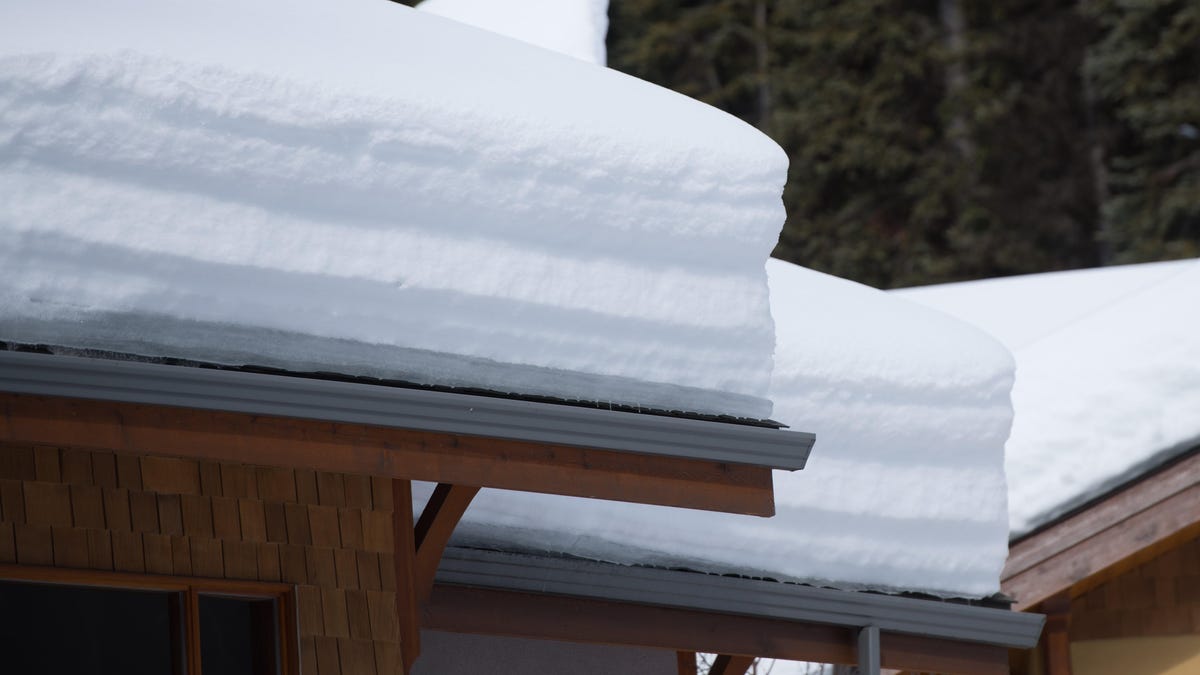You Need to Know Your Roof's 'Snow Load'
Most roofs constructed after modern regulations were passed in the U.S. in 1988 are built to withstand a certain amount of extra weight in the form of snow. Even older roofs usually have some extra capacity to allow for...

Photo: Shawn Hamilton (Shutterstock)
Most roofs constructed after modern regulations were passed in the U.S. in 1988 are built to withstand a certain amount of extra weight in the form of snow. Even older roofs usually have some extra capacity to allow for snow. But sometimes, larger amounts of snow, or wet or compacted snow can exceed the capacity of your roof. Luckily, you can calculate your structure’s snow load, and if you think you’re getting close to the brink, take some precautions. Here are some helpful steps to take to keep snow from damaging your roof.
Use a snow-load calculator
There’s some information you’ll need to collect before you can make the calculations for your particular structure. First the length, width, and pitch of your roof will determine most of the calculation. Feed that information—along with your state, and the depth and type of snow—into this snow load calculator from OMNI, and it will tell you whether you’re in danger of exceeding the recommended snow load for your roof. If you’re not sure of the pitch of your roof, you can also use OMNI’s roof pitch calculator.
Using this type of calculation, you should also take into account things like dormers, added porches, or other additional structures that might make your roof more vulnerable in certain spots. You should make sure to keep an eye on crevices between eves or around chimneys where snow could potentially drift and accumulate more than in other areas. Because not all snow will be exactly the same depth or density, your calculations will always be approximate. If you suspect you’re getting close to the limit, removing some snow is a good idea.
Look for damage warning signs
If you see any warning signs like moisture making it’s way inside, ice or icicles forming on your roof and gutters, or unusual creaking coming from your ceiling, it’s time to remove some snow to prevent any further damage. Also, look out for ice dams: If you end up with ice rerouting drainage from your roof, you can fill a sock with de-icer and drape it over the ice dam to melt a channel toward the gutter. Don’t use rock salt on your roof, though, because it can damage metal as well as some types of roofing materials.
G/O Media may get a commission

Up to $100 credit
Samsung Reserve
Reserve the next gen Samsung device
All you need to do is sign up with your email and boom: credit for your preorder on a new Samsung device.
How to remove snow from your roof
Once you’ve determined that the snow load capacity has been reached, you should remove snow with caution. Make sure to secure ladders if you use them and have a plan for where the snow will go once it’s removed. Piling snow against your house isn’t a good idea from a moisture management perspective, so you should keep snow drifts clear of your foundation wall as much as you can. Also, stay clear of icicles and packed snow that can cause injuries as they fall.
If you have a one- or two-story home, you might be able to remove some snow with a roof rake. These are specially designed to be gentle on your shingles, but if you don’t have a roof rake, you can carefully use a snow shovel or a push broom and a ladder to remove snow. Whatever tool you decide to use, you should leave a bit of snow on the roof, partially to avoid damaging your shingles, and partially to keep some insulation between your roof and the elements. If you can’t clear the whole roof, do the best you can. Relieving some of the weight will help, even if you can’t do it all.

 JimMin
JimMin 































